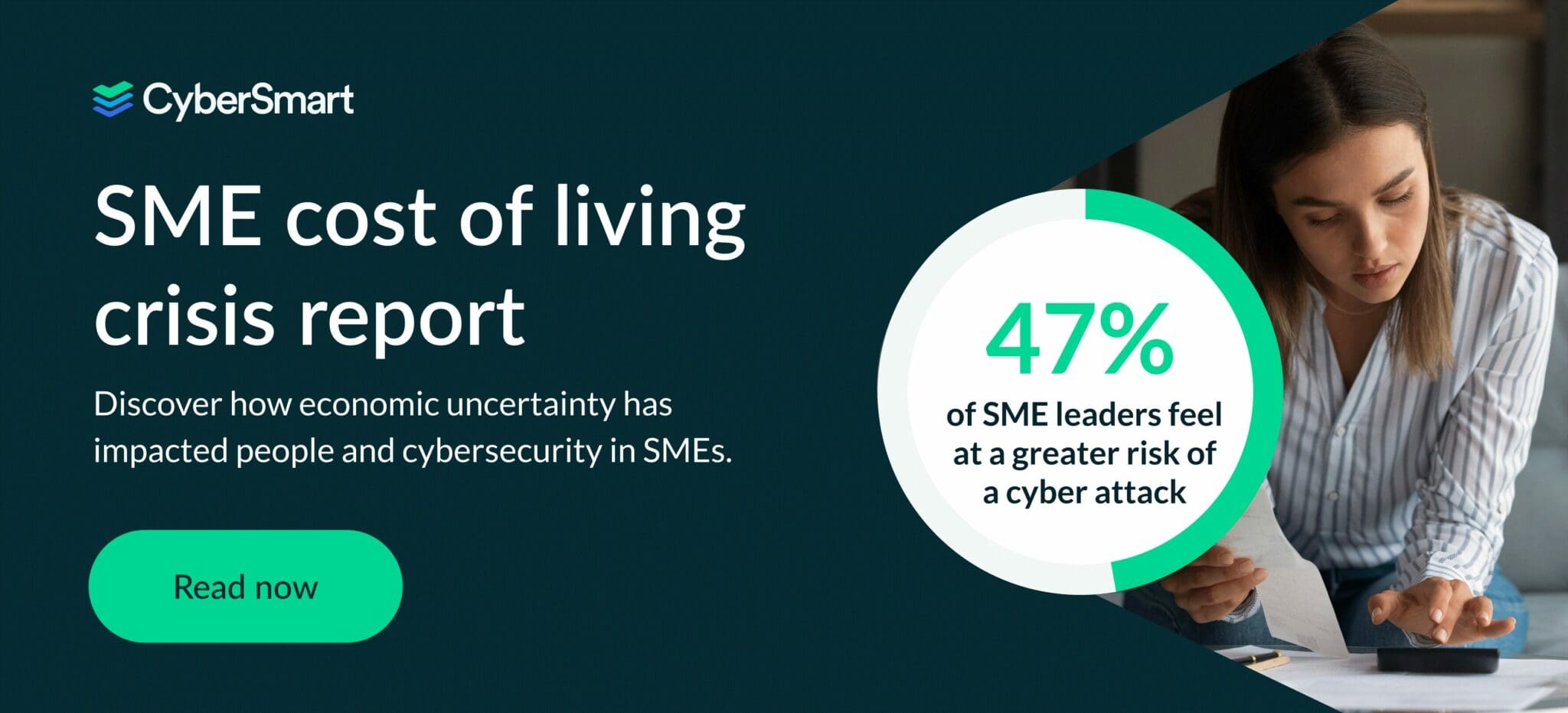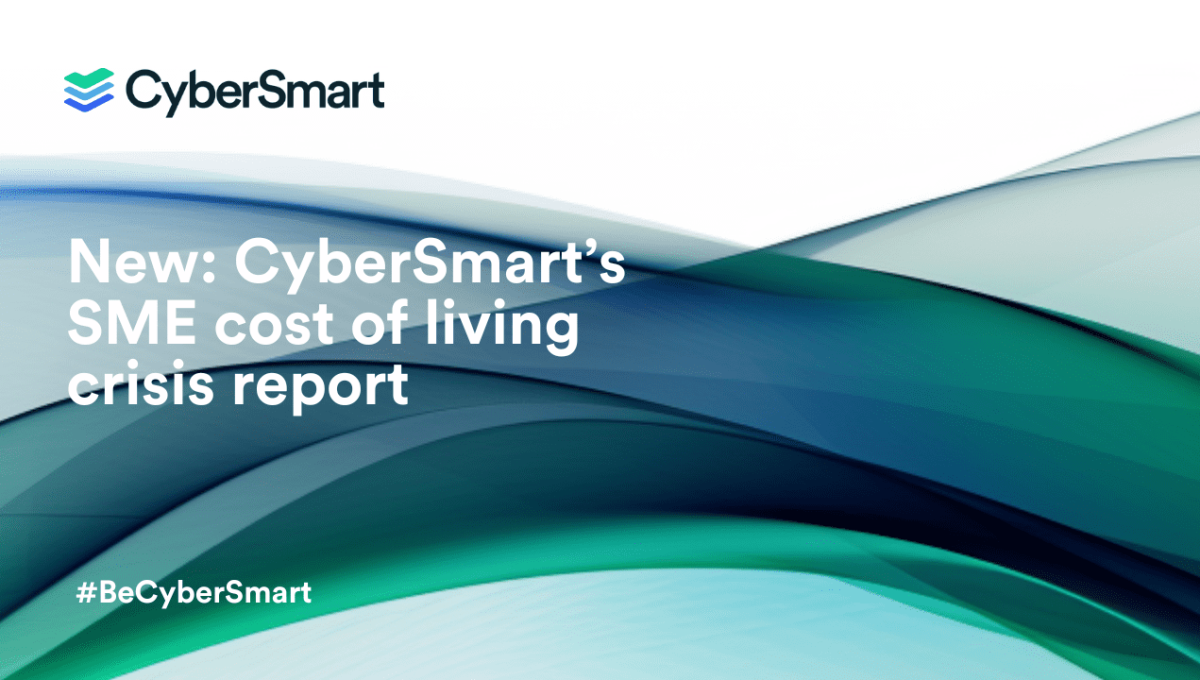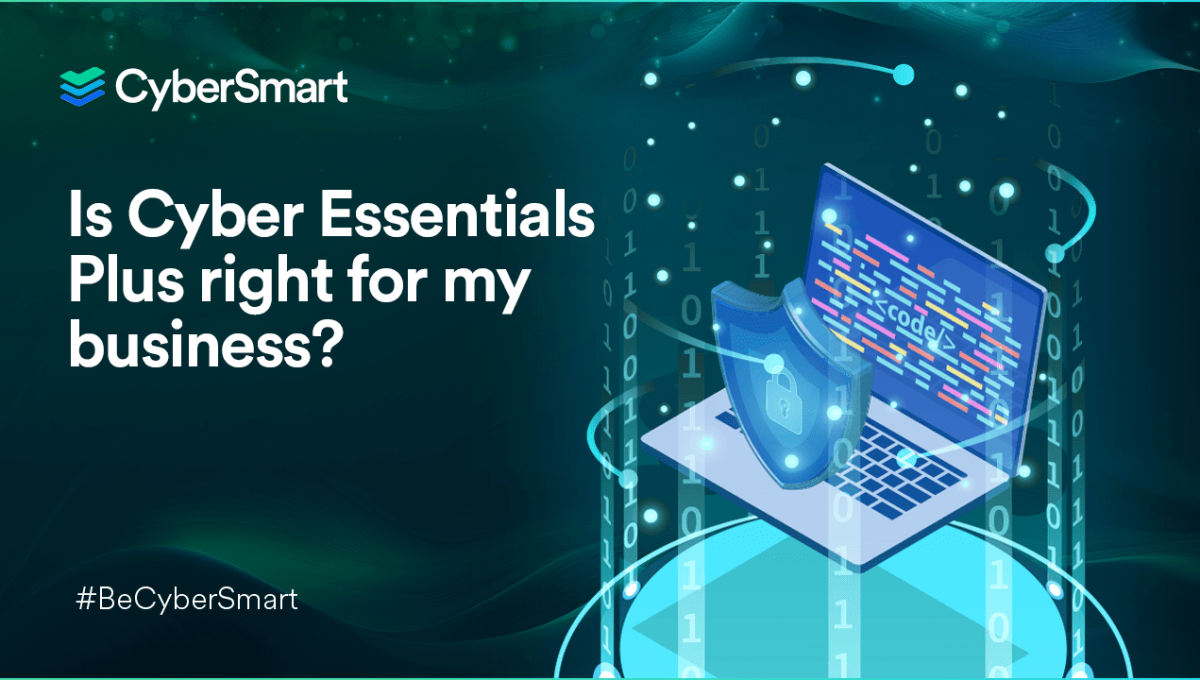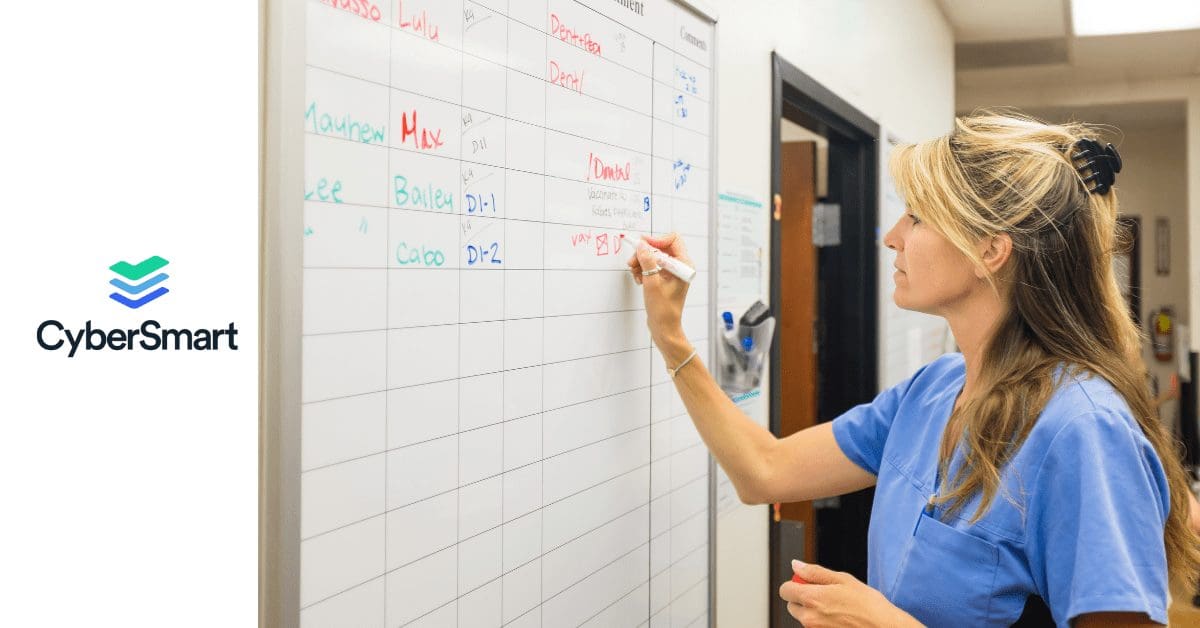At CyberSmart, we recognise that the cost of living crisis not only affects our personal lives, but the way small and medium businesses (SMEs) manage their priorities, too.
Uncertainty is never the best feeling for any business leader. A dampened economic outlook can result in SMEs becoming more cost-conscious and less growth-minded. And we’re concerned about the impact on cybersecurity.
That’s why our latest insight, the SME cost of living crisis report, explores its impact on SMEs, leadership, the workforce, and business cybersecurity.
What’s in the report?
We tasked Censuswide with surveying 1,000 UK SMEs to reveal the current state of the cybersecurity landscape for SMEs.
The report is full of helpful statistics, figures, and insights that reveal the behaviours of decision-makers during the cost of living crisis.
In the report, you’ll learn about:
- What’s driving decision-making in the cost of living crisis?
- The impact on cybersecurity investments
- Leadership behaviours and mistrust of employees
- Cybersecurity policy and governance factors
- How should SMEs approach cybersecurity in the cost of living crisis?
Discover CyberSmart’s SME cost of living crisis report. Learn more about the impact on cybersecurity, people, and more. Read it today.
Discover key insights about the cybersecurity landscape
At CyberSmart, we work to make cybersecurity simple and accessible to everyone. We aim to provide every business, no matter how small, the tools to protect themselves against cybersecurity threats easily and effectively.
That’s why we’ve incorporated our expert insight into the report, too. We deep-dive into the reasoning behind the report's findings to support the facts and figures. This provides you with a better understanding of the current SME cybersecurity landscape.
For example, the report reveals that nearly half of UK SMEs (47%) believe they’re at greater risk of a cyberattack since the onset of the cost-of-living crisis. Why? External threats, insider threats, employee mistrust, and employee negligence are all driving this behaviour, and we explore this in the report. Read it for free today to get the latest insights into SME cybersecurity during the cost of living crisis.





